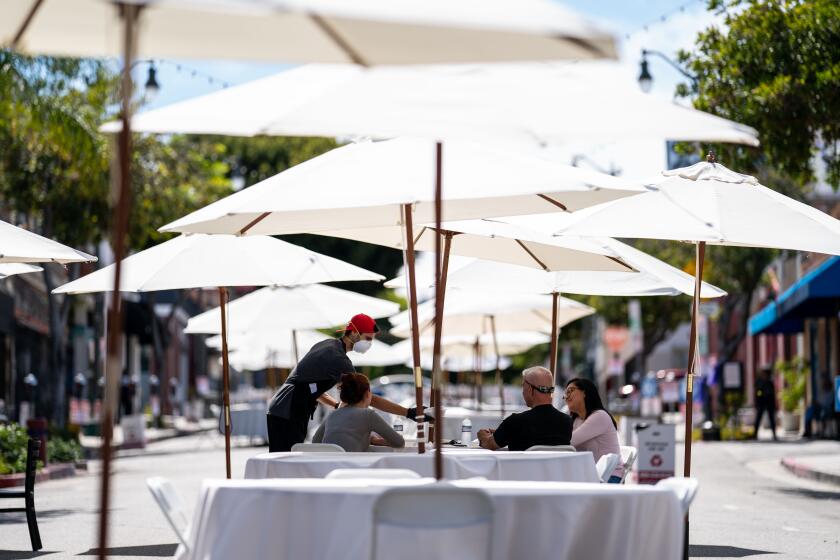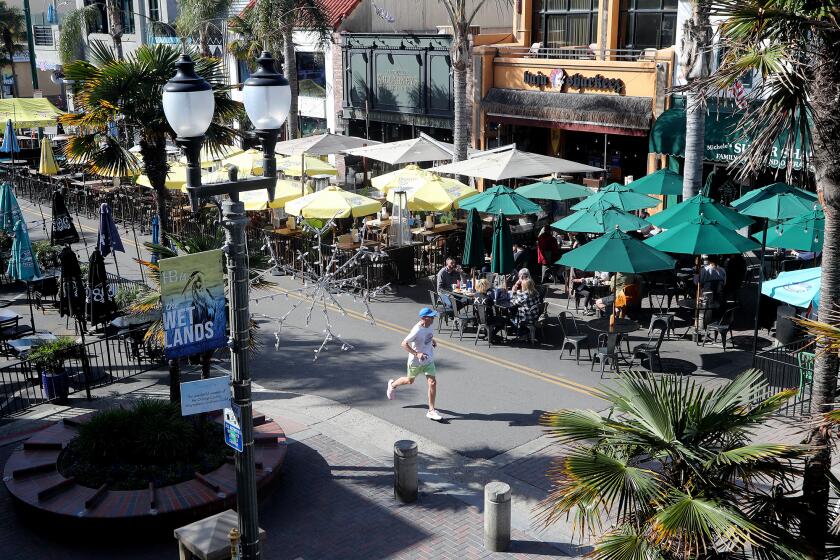‘Sucker punch’ proposal could doom outdoor dining
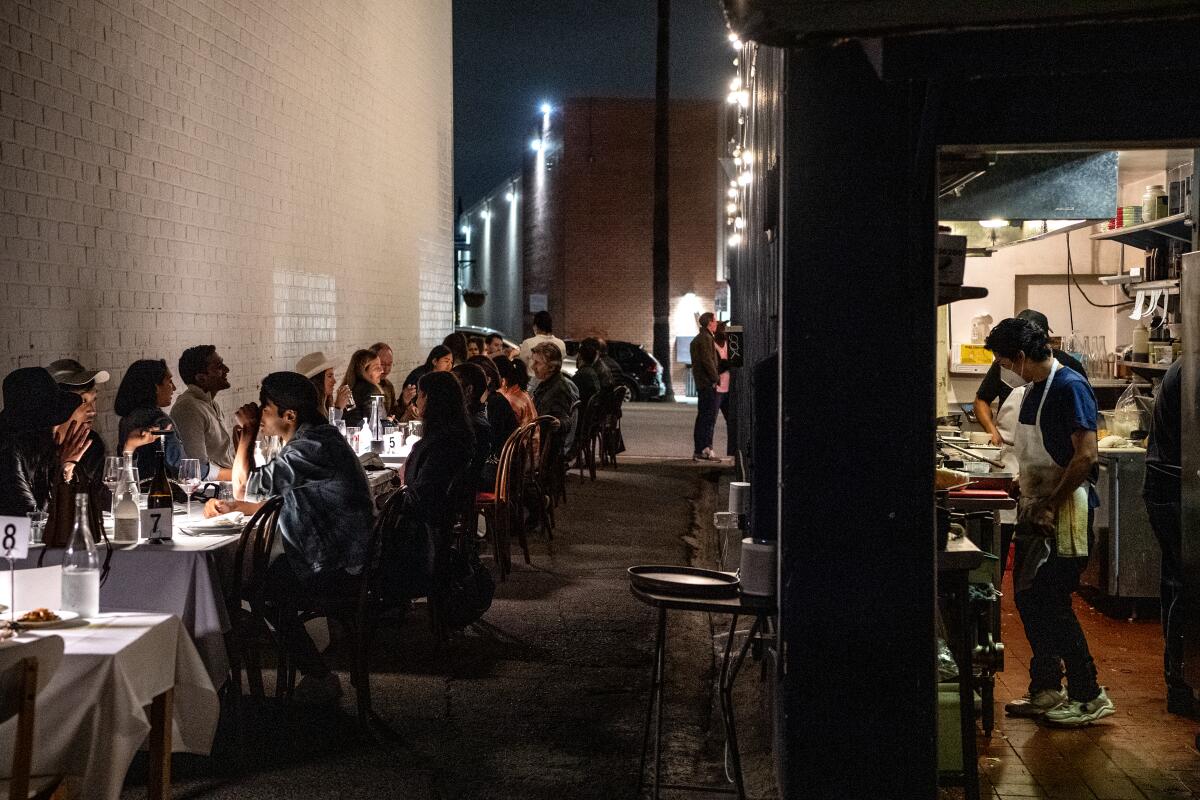
- Share via
“It’s like being kicked in the shins, over and over again.”
Holly Fox, co-owner of Last Word Hospitality, the group behind Found Oyster Bar in East Hollywood and Nossa Caipirinha Bar in Los Feliz, is bracing for another painful, expensive battle to stay in business.
In the fall of 2020, she spent about $22,000 to install a parklet patio in front of Found Oyster, using a permit she was granted through the city’s L.A. Al Fresco, a program that allowed restaurants to quickly open outdoor dining areas amid a pandemic. Two weeks later, dining was shut down again. She reopened in February 2021 and has continued to adapt to develop a sustainable business model.
“The Al Fresco dining program saved Found Oyster,” she said. “Without it, we would have had to close.”
Restaurants relied on the Al Fresco program to set up vital outdoor seating areas and bring in much-needed revenue when many people were still hesitant to eat indoors, or out at all. The program bypassed the usual paperwork, bureaucracy, fees and months of approval that accompany the city permitting process, allowing restaurants to apply for free permits online in minutes and to set up dining areas on private property, on sidewalks, along curbsides and in the street. Without it, many restaurants would have closed. Now, the city’s proposed ordinance would revert to confusing red tape that could cost restaurants tens of thousands of dollars and put those who can’t afford the additional costs out of business for good.
The proposed ordinance, the subject of a public hearing for comments on Wednesday, would introduce restrictions and require restaurants to apply for expensive new permits for existing patios created using the program.
The city’s “L.A. Al Fresco” program grants temporary permits to expand outdoor seating into public spaces
“Restaurants will need to apply under the permanent Al Fresco Program in order to continue offering outdoor dining at their establishment,” Yeghig Keshishian, L.A. City Planning chief external affairs officer, wrote in an email to The Times. “The original intent behind L.A. Al Fresco was to provide restaurant operators the ability to temporarily keep their doors open during the height of the pandemic, as a result of waivers granted through the emergency orders. Now that those emergency orders are being lifted, the City must codify this program to preserve the original intent of L.A. Al Fresco.”
The proposal comes at a time when restaurants are just starting to dig out of the mountain of debt they accrued during the last three years, and when ingredient and labor costs are skyrocketing.
“I can’t imagine after three of the hardest years for restaurants worldwide, to go for another sucker punch,” said Tyler Wells, chef-owner of All Time restaurant in Los Feliz.
The entirety of the seating at All Time is outdoors. Wells and his wife and partner Ashley applied for an al fresco dining permit in May 2021. They invested about $30,000 on decks with seating and landscaping. In July 2021, they opened their new patio with 60 seats.
“We lost 75% of our business overnight, and it was basically an impossible two years,” he said. “It [outdoor dining] allowed us to bounce back.”
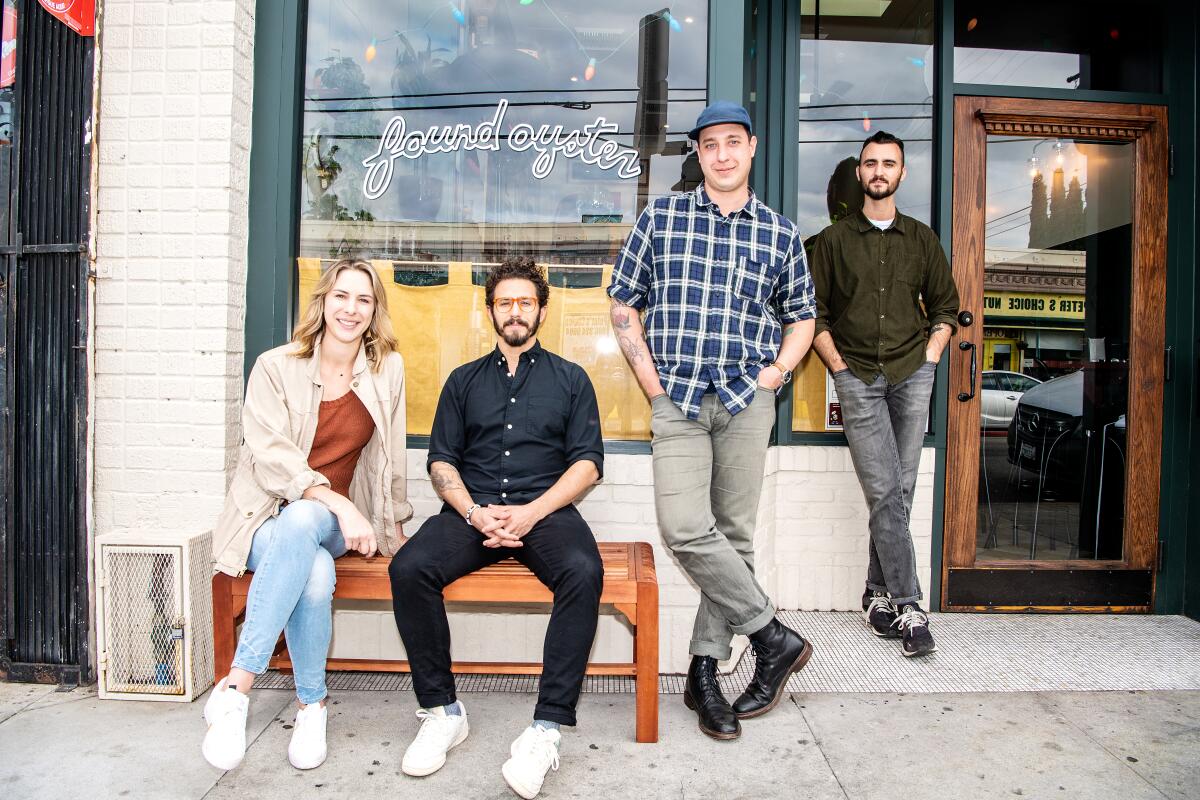
The proposed ordinance would require Wells to apply for multiple new permits to keep and serve alcohol on the patio he has been operating for the last few years. If the ordinance is passed as drafted and he doesn’t comply, he’ll lose 30 seats and have to restructure his economic plan for the restaurant, including cutting staff.
The Al Fresco dining program allowed more than 2,500 businesses to skip the expensive, months-long process of applications, approvals and fees. Eddie Navarrette, executive director of the Independent Hospitality Coalition, a group that advocates for and supports independent restaurants, said he can’t begin to quantify the contribution of the original Al Fresco program to the survival of restaurants. He has helped numerous restaurants apply for various permits over the years.
“A lot of businesses are closing left and right, especially with other things to deal with like rising food costs,” he said. “These 10-minute permits allowed you to put your seats out there.”
Navarrette recently sent out an email blast to restaurants in the IHC, alerting them to the public hearing on Wednesday and to a similar ordinance proposed in West Hollywood.
“The al fresco permit also allowed you to not have to get a conditional use permit for the expansion of your onsite alcohol consumption privileges,” he said. “Without the al fresco permit, these are some of the most expensive, long and cumbersome processes for restaurants.”
With L.A. in the yellow tier of COVID-19 reopening, restaurants are booming. Check out these outdoor dining options for sushi, ramen, tacos and more.
Navarrette estimates that the application process alone for a conditional use permit can cost $20,000 and take about a year for planning approval. According to Navarrette, if you want to apply to have seating outside that is more than 50% of what you already have inside, you’ll need to apply for some kind of zone variance, which is another application and fee. For restaurants that need help navigating the red tape, that could cost another $20,000 for a consultant.
“If you want seating on your private parking lot, you’re going to need to hire someone to draw plans for you, draft them up, submit them to building and safety, have them review them, issue corrections with a series of back and forth, have a contractor pull the permit and have an inspector inspect the place,” Navarrette said. “It’s the same type of permit you would have to get if you did a major remodel or expansion. How is anyone going to afford this?”
Wells said he wouldn’t be applying for permits to make his expanded patio a permanent fixture at All Time. He previously applied for a sidewalk permit at another property and spent $7,000 with no guarantee of approval.
“The pandemic al fresco permit was the most thoughtful working program this city has ever offered to restaurants, and I can’t wrap my mind around it,” he said. “It feels very mean-spirited to take away things that have been a godsend.”
According to Keshishian, the planning approvals and permits needed will depend on the restaurant’s business model. He said the city is still exploring ways to streamline the process and intends to put forth recommendations for the City Planning Commission to consider in the spring.
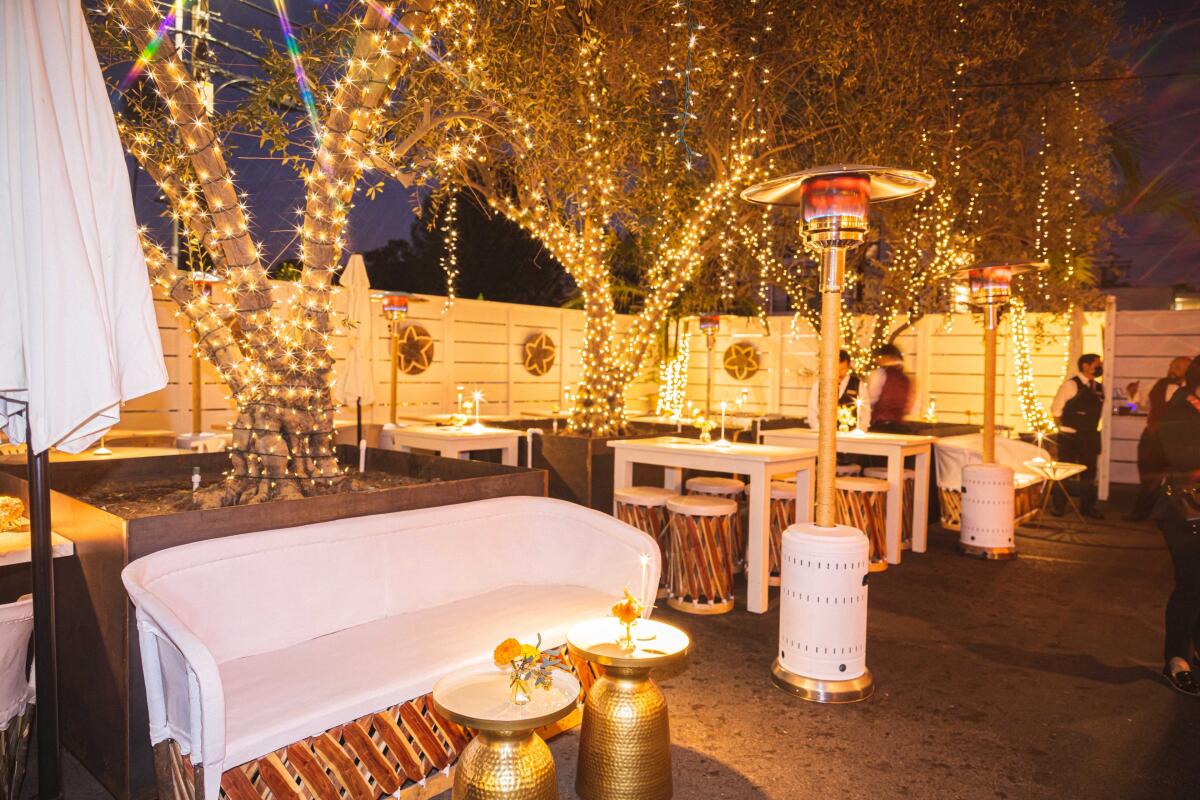
In addition to the new permits, the proposed ordinance includes restrictions such as the height of a barrier wall, the number of parking spaces that could be turned into outdoor dining areas and allowances for private events.
Christy Vega, who invested hundreds of thousands of dollars of pandemic relief money and loans to transform a portion of her parking lot into a large tented outdoor restaurant at Casa Vega in Sherman Oaks, more than doubled her dining area using her al fresco dining permit obtained during the pandemic. She said she thought the allowances would be permanent. A section of the proposed ordinance would require her to shrink her patio to the area of just five parking spaces or apply for a conditional use permit, which Navarrette calls “very expensive” and said would take a year to process.
“It’s not going to be enough for restaurants to even invest in setting up a patio,” she said. “That’s really brutal. And everybody’s loans just became due in January.”
At the start of the pandemic, nearly 4 million small businesses and nonprofits took out Economic Injury Disaster Loans from the federal government, according to the Small Business Administration. After years of deferrals, many businesses had to start paying back their loans in January.
While the ordinance introduces restrictions, Keshishian and Navarrette both said that it’s also intended to loosen some existing restrictions as well. One is the removal of a zoning provision that all patios had to follow prior to Covid, which limited the installation of outdoor seating to no more than 50% of what is available inside.
“This is the one thing in the current ordinance proposal that is good,” Navarrette said.
“There are other zoning regulations in effect today, such as limits to outdoor dining on the ground floor only, which we are also seeking to loosen to support businesses while still maintaining good neighborhood serving policies that protect public health and welfare,” Keshishian said.
The TimesOC newsletter brings you the latest on Orange County from Orange County.
Allowances for outdoor dining on a second story won’t impact Casa Vega, but private outdoor events are a significant source of revenue for the restaurant. A section of the ordinance outlines “prohibited activity” including private events and cover charges in outdoor dining areas.
“The public wants the ability to live life, celebrate moments and milestones in safe outdoor environments,” Vega said.
Safety and the comfort of diners are also of concern for Fox, whose indoor dining area at Found Oyster includes counter seating, small tables pushed up against the opposite wall and a narrow space to walk in between. Her al fresco permit allowed the restaurant to add 20 seats outside, and most importantly, to remain open. If she loses the parklet in front of the restaurant, she estimates being forced to lay off 15% to 20% of her staff and lose the ability to accommodate those who feel safer eating outdoors.
“With the little parklet we have, it’s not big,” she said. “We’re still seeing a clientele not comfortable eating indoors and that may be something that lasts for a portion of the population.”
In addition to being a lifeline for Justin Pichetrungsi of Anajak Thai in Sherman Oaks, outdoor dining helped him develop a voice and a style that catapulted his family’s restaurant, which first opened in 1981, to the #2 spot on our 101 Best Restaurants list in 2022. Pichetrungsi applied for an al fresco permit in 2020 and said he was “like auto-approved.” He began hosting Thai Taco Tuesdays in the alley next to his restaurant, and omakase meals that introduced the city to his innovative take on Thai food informed by the energy and diversity of Los Angeles.
“The alley has become a major part of how we sort of see ourselves as this binary space which is not only economically fulfilling, but identity-wise, I don’t think I can divorce myself from it,” he said. “It’s sad and it’s counterproductive to the strides restaurants like mine have made to adapt and adapt.”
While the al fresco permit Anajak holds covers both the alley and the front patio portion of his restaurant, Pichetrungsi said just eliminating the four tables in front would mean losing 48 covers a night.
“The economics of outdoor dining really helps and restaurants provided so much activation in the industry and just the culture of how this city is now,” he said. “The patios unlocked a whole sort of mini segment within the economy that can be monetized. Isn’t the city perturbed by how many restaurant closures there have been?”
While restaurant success rates nationwide have never been high, the city is experiencing a slew of recent closures including the celebrated Konbi in both Echo Park and Culver City.
Many restaurant owners and chefs had the same question: If restaurants have successfully operated patios for the last three years, without complaint, why change the system?
“In short, our zoning rules clearly articulate a series of rules that restaurant owners must adhere to from parking to hours of operation, among many other considerations,” said Keshishian. “These rules did not go away with the emergency orders; they were merely relaxed for a specified period of time. In the end, all of our policies should balance business interests along with community impacts.”
Navarrette is hoping Los Angeles will adopt something in line with San Francisco’s recent Shared Spaces program, which clearly outlines with pictures, how to extend a patio permit for restaurants and requires a single permit from the Alcoholic Beverage Control department to serve alcohol on the patio versus a permit from the ABC and a conditional use permit in Los Angeles.
“To be clear, this ordinance is only speaking toward zoning rules or Department of City Planning process,” Navarrette said. “It still does not get into how the Department of Building and Safety will implement actual permits for patios. We also do not know yet how we will approach other areas on public right of way such as parklets, unused alleyways or similar circumstances. These rules must come from the L.A. Department of Transportation. Most likely a separate permit will be required there as well. It’s all very confusing for an operator to figure out.”
The uncertainty surrounding the proposed changes worries Fox of Found Oyster and Nossa, who said pre-pandemic, it would take 12 to 14 months from signing a lease to opening a restaurant. Now, it takes closer to two years and can involve at least seven different department approvals, each with its own priorities, fees and timelines. She’s already close to doubling her budget for city-related costs for the two restaurants she has open and the two she is working to open.
“If we have to build a new deck at Found Oyster, we’ll probably be spending $35,000 to $40,000 with furniture plus any of the city fees and time,” she said. “Right now, a conditional use permit process by itself, I’m spending, with expedited fees, $10,000 to $12,000 to apply, another $15,000 to effectuate, and that doesn’t include the cost of consultants to get it done. That’s upwards of $45,000 to $60,000, just for the conditional use permit approval and that excludes building and safety fees, other permit fees and any construction costs. It’s pay to play.”
Fox is also worried about the ability to keep operating during the permit approval process.
“If we can, then the cost is mitigated because we will experience a massive loss of business during that time,” she said. “If not, we would have to completely re-adapt how we run our restaurant while we wait.”
Keshishian said restaurants will be able to maintain their outdoor dining operations on private property and sell alcohol under their existing permit, as long as the restaurant has filed an application for a new permanent permit before the emergency orders are lifted at the end of August.
“City Planning is not looking to alter their existing operations until we have finished processing their application,” he said. “At the end of the day, this ordinance is intended to support the operations of these restaurants. It’s in their interest to apply; otherwise, they will find themselves to be out of compliance with a series of citywide regulations that are in effect, everything from parking to outdoor seating.”
Navarrette anticipates any new ordinance taking 10 to 24 months to be proposed, approved and implemented. Based on his experience with restaurants dealing with code enforcement actions, he estimates a series of warnings and fines for restaurants that don’t comply, followed by possible criminal action from the city attorney’s office.
“We are out of support, and it feels like such a backward step,” Fox said. “We should be doing all that we can to keep this vibrancy alive because so much good came out of the creative push that was the horror of the pandemic. Making it harder and harder for restaurants just doesn’t make sense. Who benefits?”
More to Read
Eat your way across L.A.
Get our weekly Tasting Notes newsletter for reviews, news and more.
You may occasionally receive promotional content from the Los Angeles Times.
